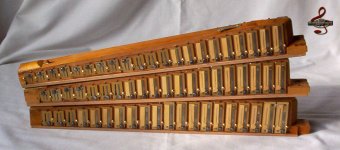Patrick Yves
Newbie
Hi, I'm wondering if I could get some advice? I'm thinking of buying a Serenellini Solo 96 343MW.
I see you can upgrade the hand made 'a mano' reeds to special hand made 'a mano speciali' reeds. I was wondering if anyone here has any experience with either/both and what the differences between them might be? I've had a chance to play one with the a mano reeds and loved it but unfortunately I've not been able to try the a mano speciali's. Put simply what makes them special and are they worth it! Also does anyone know what reeds are used, I've been told either Voci Armoniche or Binci?
Thanks for your time, all help and knowledge is much appreciated.
I see you can upgrade the hand made 'a mano' reeds to special hand made 'a mano speciali' reeds. I was wondering if anyone here has any experience with either/both and what the differences between them might be? I've had a chance to play one with the a mano reeds and loved it but unfortunately I've not been able to try the a mano speciali's. Put simply what makes them special and are they worth it! Also does anyone know what reeds are used, I've been told either Voci Armoniche or Binci?
Thanks for your time, all help and knowledge is much appreciated.

